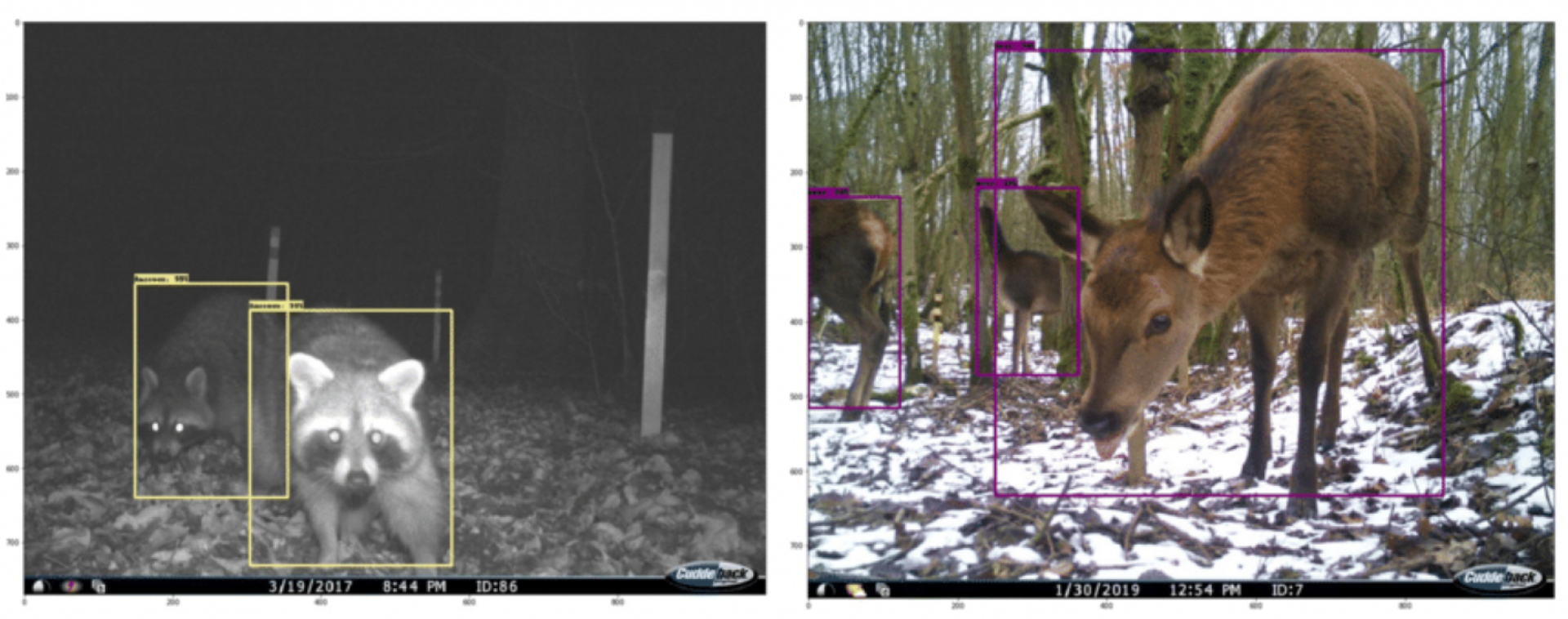AI Meets Wildlife Conservation: Machine Learning in Wildlife Research*
* Based on the study of Bijl, H & Heltai, M. (2022). A narrative review on the use of camera traps and machine learning in wildlife research. Columella - Journal of Agricultural and Environmental Sciences, 9(2): 47-69. DOI: https://doi.org/10.18380/SZIE.COLUM.2022.9.2.47
Artificial intelligence (AI) is becoming more and more prevalent in our everyday lives. From the words we type into a search bar to dealing with medical records. This is just as true in wildlife conservation where the use of AI is becoming increasingly more prominent.
Although the use of AI in wildlife conservation is still in its early stages, there are already good examples available which we are going to take a closer look at below.
Introduction to machine learning
Machine learning is a type of AI and is an increasingly popular tool in wildlife research.
This is the ability of a computer to perform tasks by training it from data (images) based on an algorithm. This is used, for example, when processing data from camera traps (read the article about the use of camera traps here [link]).
It greatly reduces the amount of time and effort required to analyse all the images as the computer identifies the “object” for you and deletes empty images (false positives).
Several pre-trained open-source models are available for object identification. Although they can be individually created, this requires a large amount of annotated data, computer power, and lots of expertise in programming and machine learning.
Accuracy of identification
The main goal of object detection in machine learning in wildlife research is to identify and classify animals in camera trap images, so we don’t have to, or at least to a lesser extent.
There have already been successful uses with accuracy rates ranging from 79% to 98%.
These different rates differ mainly because of the type of model used and the training process beforehand, this includes the number of images used during the training. The more training images are used, the higher the likelihood that the computer will detect and identify the right animal.
High accuracies were also reached when identifying false positives. These rates ranged from 69% to 97.3%, although this again highly depends on the number of training images.
One study managed to get an accuracy of 98% with the use of 3.37 million images. However, another study came close with 97% with “only” 120,000 images.
So why is this important?
Well, the higher the accuracy, the more animals are recognised correctly.
The closer this number is to 100%, the more we can rely on AI. Overall, less human labour will be needed for annotation and data processing.
Individual identification
We all know it’s pretty difficult to identify individual animals in the wild when we do not have a trained eye for it. This is especially the case when the animal lacks unique body features we can recognise them from.
Now taking it a step further, there are new technologies that can identify not only the species but also the individual.
Usually, individual animals are recognised by their unique body markings (spots, stripes, etc), but this becomes more difficult when the species lack these patterns.
However, in two studies they managed to identify unique individuals without body markings, namely brown bears with a classification accuracy of 83.9% based on 4,600 images and Asian elephants with 89.02% accuracy based on 3,800 images.
False positives/negatives
One of the main issues when using camera traps are false positives and negatives; this is when the camera detects something that is not an animal (false positive) or when the camera doesn’t detect anything even though there is an animal in the picture (false negative).
This is especially problematic when camera traps are not placed well and lose shrubs or branches trigger the camera.
Luckily, there are also models that can identify empty images and remove them from the dataset. This has been done successfully with accuracy rates varying from 69% to 97.3%, depending on the model and number of training images used.
Pros and cons
This all sounds very nice, but advanced computational skills are needed to use machine learning models, making AI quickly inaccessible for conservationists.
Plus, it’s impossible to reach an accuracy of 100%.
However, the robustness of the model can be improved the more images that are used.
In order to achieve this, AI can be combined with citizen science - involving volunteers in data processing. This way, more can be achieved within a shorter period of time.
Another disadvantage is the annotating process when training the model, as this can be rather time-consuming.
However, these are not impossible aspects to overcome. As technology further develops, AI in wildlife research might become the everyday tool to process (big) data and decrease the amount of expenses and work that come with it.
Hopefully, wildlife/game biologists can spend more time answering (scientific) research questions and understanding ecological processes rather than processing data.
Here’s to a bright AI-assisted future.
Picture source: https://link.springer.com/article/10.1007/s10344-020-01404-y




